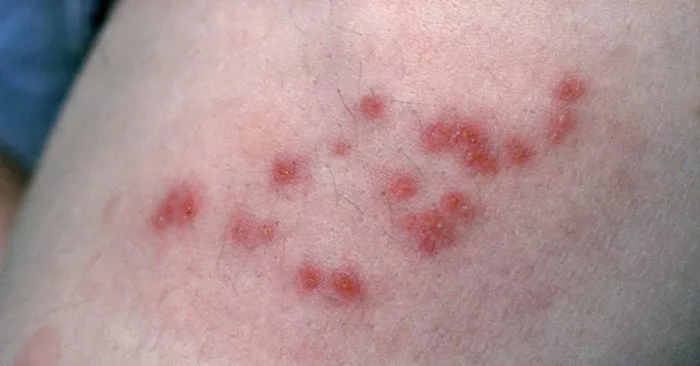Shingles, also known as herpes zoster, is a painful rash caused by the varicella-zoster virus, the same virus that causes chickenpox. If you’ve had chickenpox, the virus remains dormant in your body and can reactivate later in life as shingles. Recognizing shingles early and knowing how to treat it is essential for managing symptoms and promoting healing. This article provides detailed information on what to put on shingles when they first start.
Understanding Shingles
What Causes Shingles?
Shingles occurs when the dormant varicella-zoster virus reactivates. Several factors can trigger this reactivation, including:
Weakened immune system: Age, stress, and certain health conditions can compromise your immune system.
Injury or trauma: Physical stress to the body can trigger shingles.
Medications: Some medications that suppress the immune system can increase the risk.
Symptoms of Shingles
The symptoms of shingles usually begin with a burning sensation or tingling in a specific area, often on one side of the body. This may be followed by:
Pain: A sharp or stabbing pain may develop.
Rash: A red rash with blisters appears a few days after the pain starts.
Itching: The rash can be itchy and uncomfortable.
Fever and fatigue: Some individuals may experience mild fever and fatigue.
Recognizing these symptoms early is crucial for effective treatment.
SEE ALSO: What Are the Major Causes of Shingles?
First Steps When You Suspect Shingles
If you suspect you are developing shingles, take immediate action. Early intervention can help reduce the severity of symptoms and promote faster healing.
Consult a Healthcare Professional
The first step is to consult a healthcare professional. They can confirm the diagnosis and recommend appropriate treatment options. Early medical intervention may include:
Antiviral medications: These medications can help reduce the duration and severity of shingles if taken within the first 72 hours of symptom onset. Examples include acyclovir, valacyclovir, and famciclovir.
Pain Management
Pain is a significant aspect of shingles. Here are some initial treatments you can consider to manage pain:
Over-the-counter pain relievers: Medications like ibuprofen or acetaminophen can help reduce pain and inflammation. Follow the recommended dosage on the label.
Prescription pain medications: If over-the-counter options are not sufficient, your doctor may prescribe stronger pain relievers.
Topical Treatments for Shingles
In addition to systemic treatments, topical treatments can provide relief from shingles symptoms. Here are several options to consider:
Calamine Lotion
Calamine lotion is a topical remedy that can help soothe the itching and discomfort associated with shingles. It contains zinc oxide and iron oxide, which provide a cooling effect.
How to use: Shake the bottle well and apply the lotion to the affected area using a cotton ball or clean fingers. Avoid rubbing the skin.
Frequency: Reapply as needed, especially when the area feels itchy.
Hydrocortisone Cream
Hydrocortisone cream is a low-strength corticosteroid that can reduce inflammation and itching.
How to use: Apply a thin layer of hydrocortisone cream directly to the rash. Avoid applying it to broken skin.
Frequency: Use it 1-2 times daily, as directed by your healthcare provider.
Aloe Vera Gel
Aloe vera gel is known for its soothing properties and can help with the healing process.
How to use: Apply pure aloe vera gel to the affected area. Ensure the gel is from a fresh leaf or a pure product without additives.
Frequency: Reapply several times a day for maximum relief.
Oatmeal Baths
Oatmeal baths can provide relief from itching and irritation.
How to use: Add colloidal oatmeal to a lukewarm bath and soak for 15-20 minutes. Colloidal oatmeal is finely ground oatmeal that can soothe the skin.
Frequency: Take oatmeal baths daily or as needed.
Cool Compresses
Applying cool compresses can help relieve pain and reduce itching.
How to use: Soak a clean cloth in cool water, wring it out, and apply it to the affected area for 15-20 minutes.
Frequency: Repeat several times a day, as needed.
Additional Tips for Managing Shingles
Managing shingles effectively involves more than just topical treatments. Here are additional tips to consider:
Maintain Hygiene
Keeping the affected area clean is crucial to prevent secondary infections.
How to clean: Gently wash the rash with mild soap and water. Pat the area dry with a clean towel.
Avoid scratching: Scratching can lead to infections and worsen symptoms.
Wear Loose Clothing
Wearing loose, breathable clothing can help reduce irritation.
Choose soft fabrics: Opt for cotton or other soft materials that won’t irritate the rash.
Avoid tight clothing: Tight clothing can rub against the rash and exacerbate discomfort.
Stay Hydrated
Proper hydration supports your immune system and skin health.
Drink plenty of fluids: Aim for at least 8-10 cups of water a day.
Avoid alcohol and caffeine: These can dehydrate you and may worsen symptoms.
Eat a Healthy Diet
A nutritious diet can support your immune system.
Focus on whole foods: Incorporate fruits, vegetables, whole grains, and lean proteins into your diet.
Limit processed foods: Avoid foods high in sugar and unhealthy fats.
When to Seek Further Medical Attention
In some cases, shingles can lead to complications. Seek medical attention if you experience:
Severe pain: Pain that is not relieved by over-the-counter medications may require prescription pain management.
Vision problems: If the rash appears near the eyes or if you experience vision changes, seek immediate medical attention.
Signs of infection: Increased redness, swelling, or pus around the rash may indicate an infection.
Conclusion
Shingles can be a painful and uncomfortable condition, but taking quick action when symptoms first appear can make a significant difference. Consult with a healthcare professional to confirm the diagnosis and discuss antiviral medications. Utilize topical treatments such as calamine lotion, hydrocortisone cream, and aloe vera gel to soothe the affected area. Additionally, maintain hygiene, wear loose clothing, stay hydrated, and eat a healthy diet to support your healing process.
If you experience any complications or severe symptoms, don’t hesitate to seek further medical attention. With proper care and attention, you can manage shingles effectively and promote a smoother recovery.
Related topics:



























